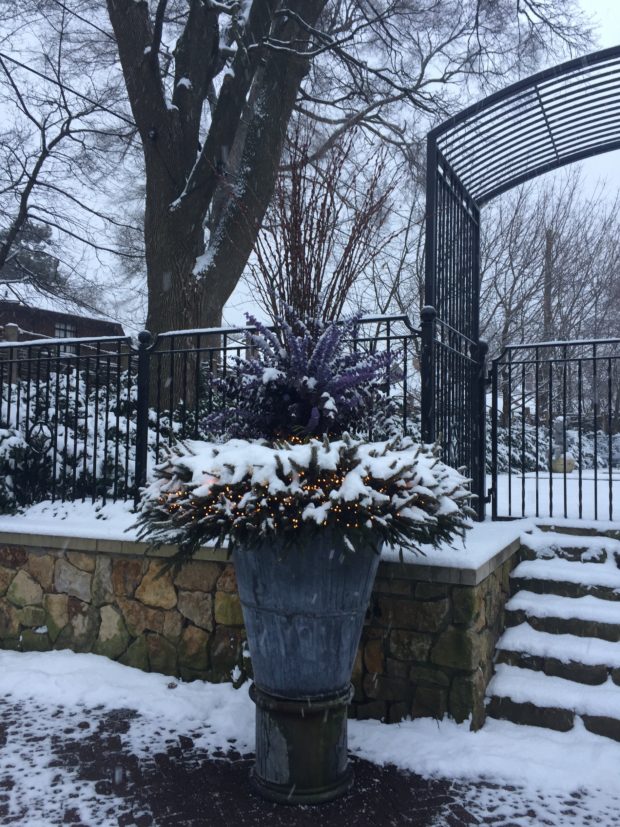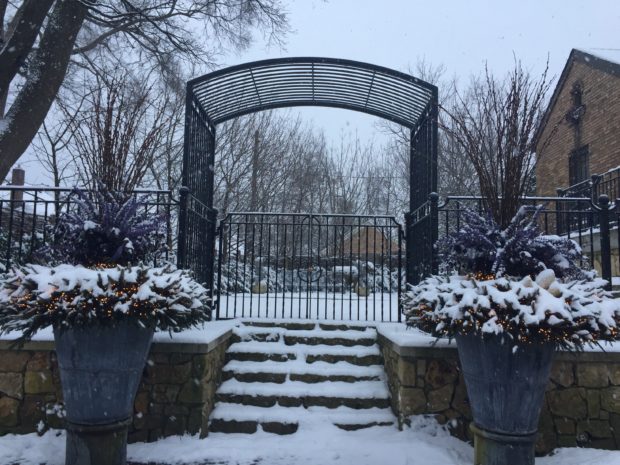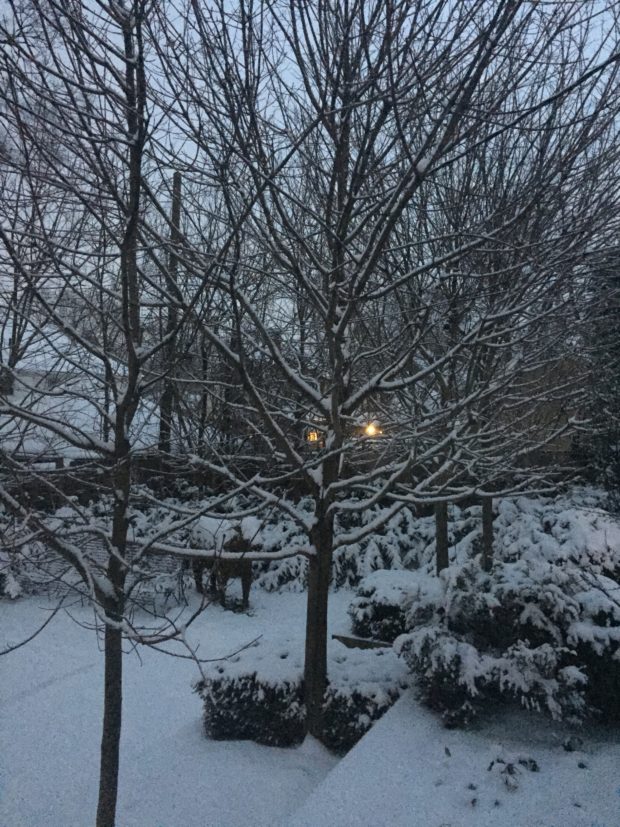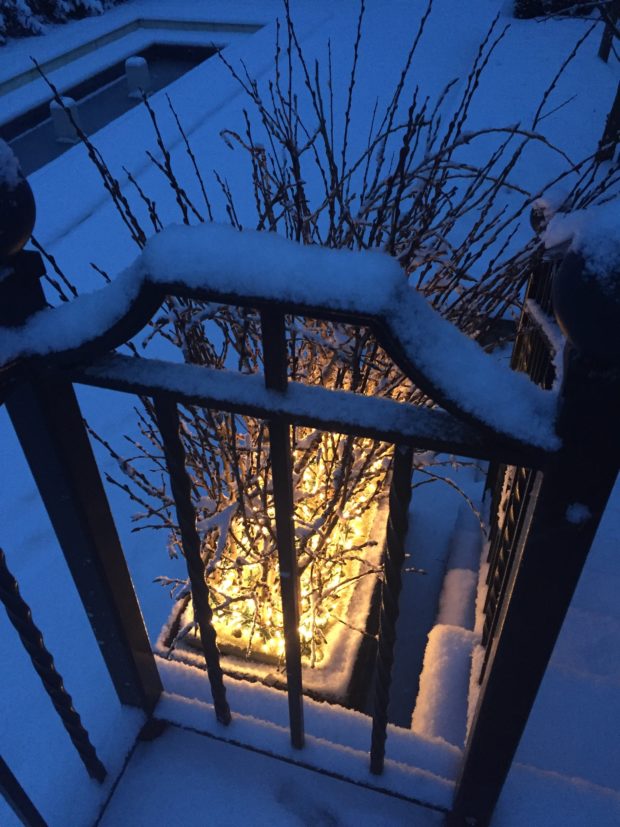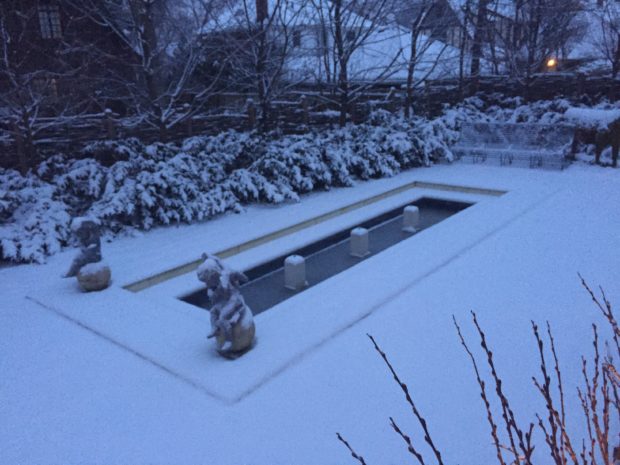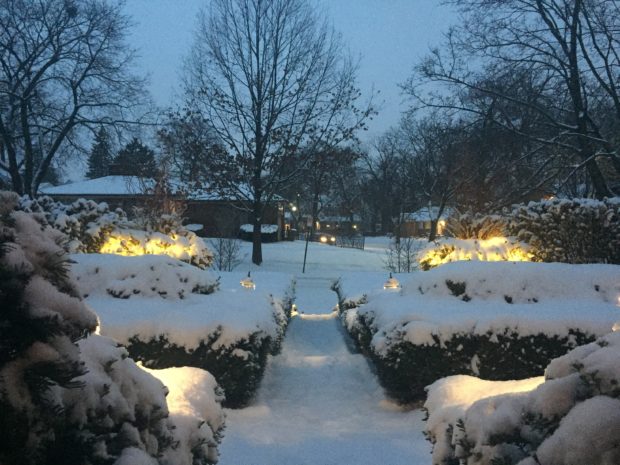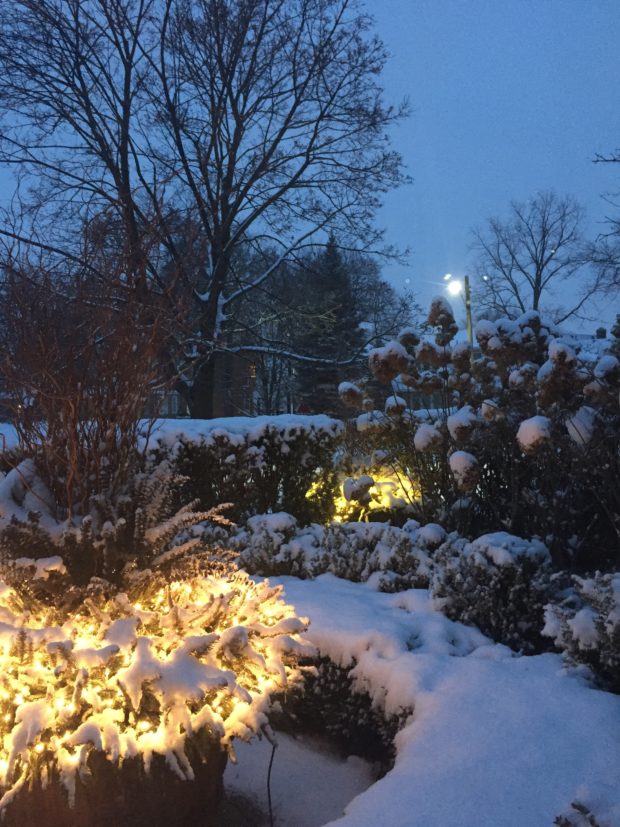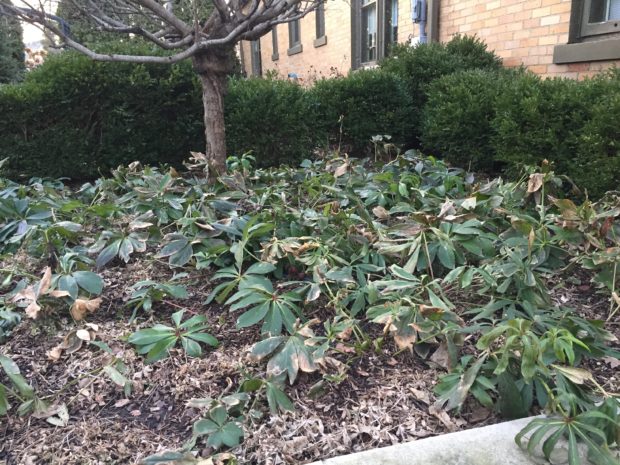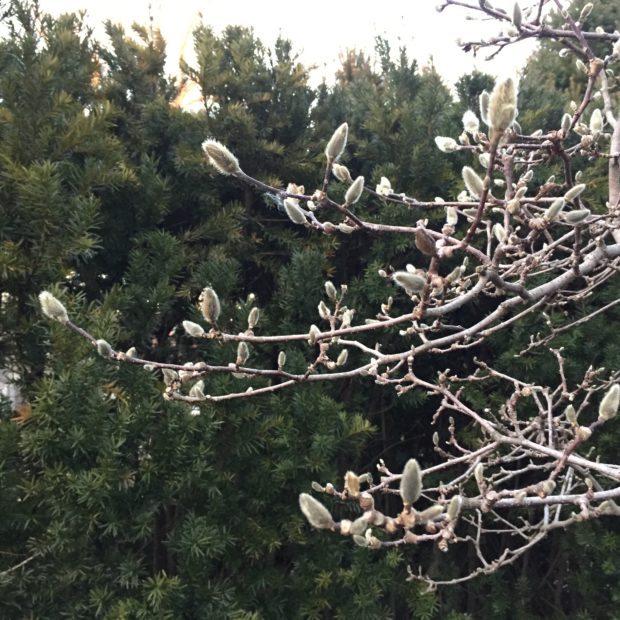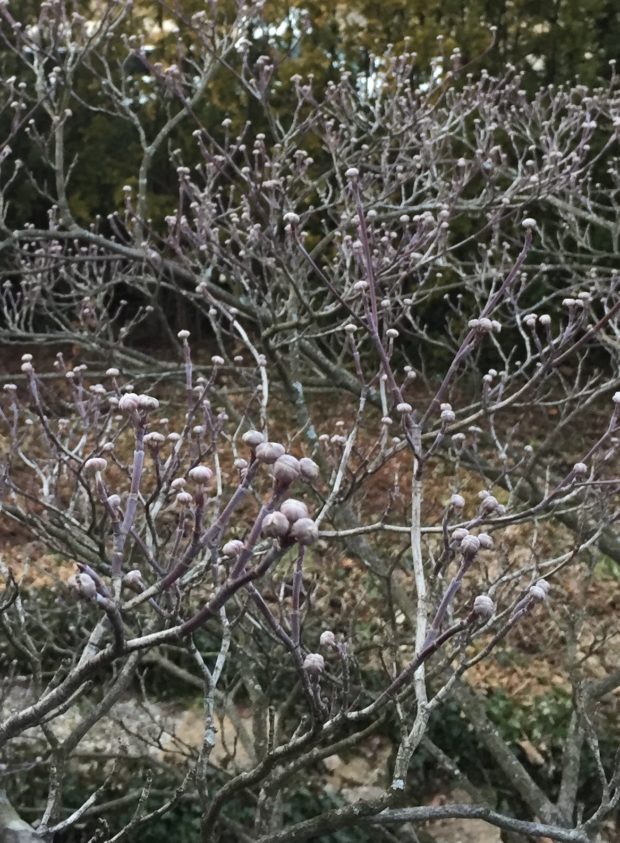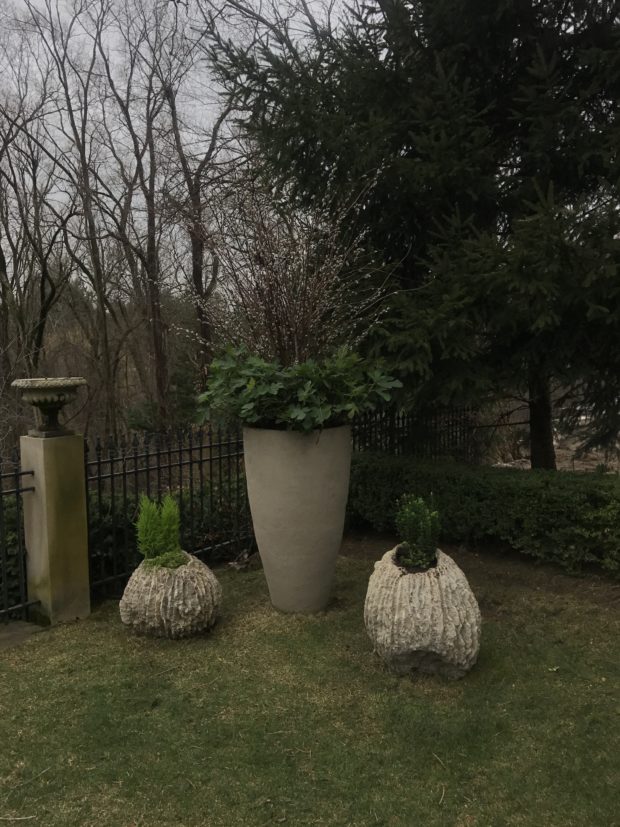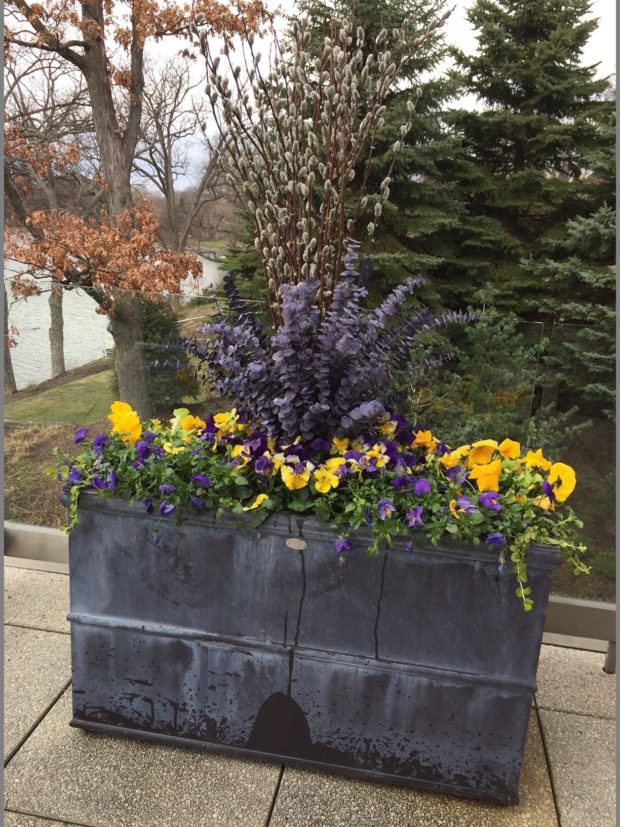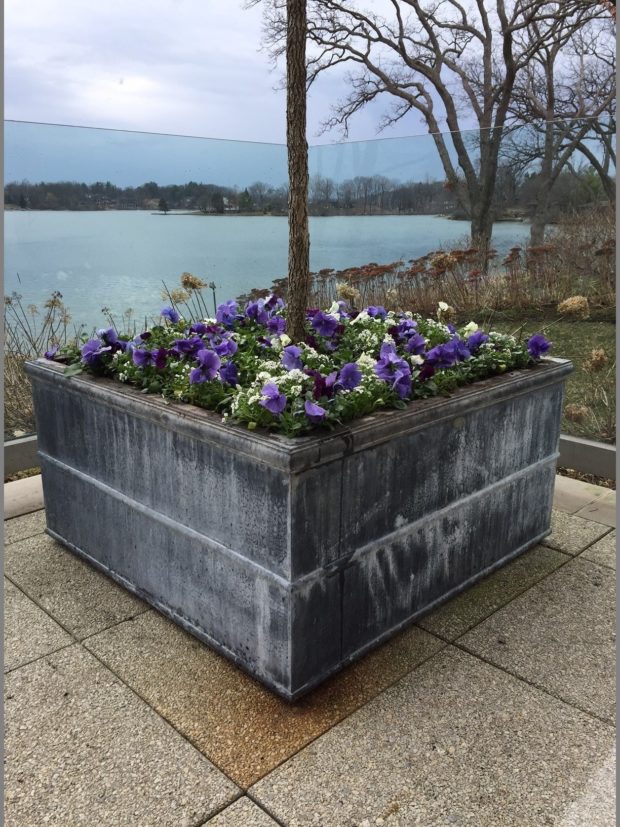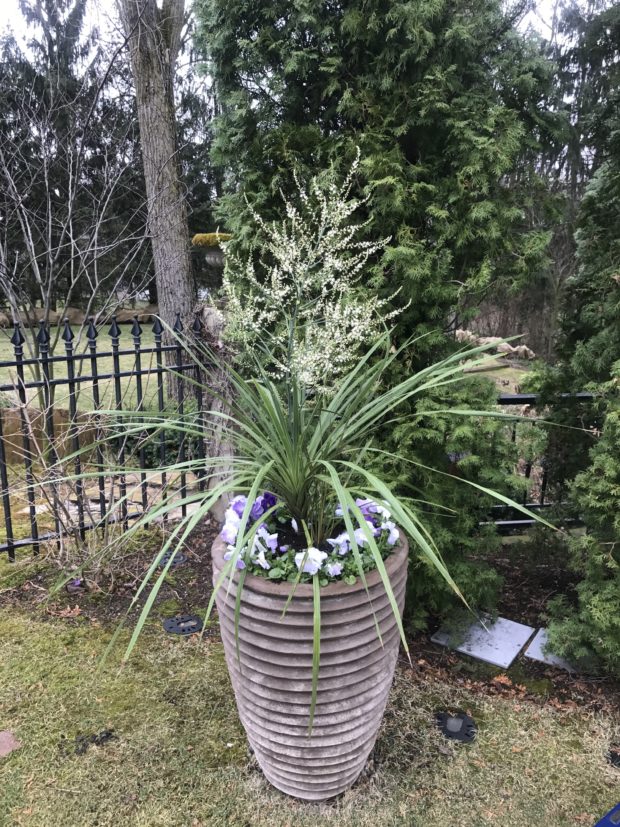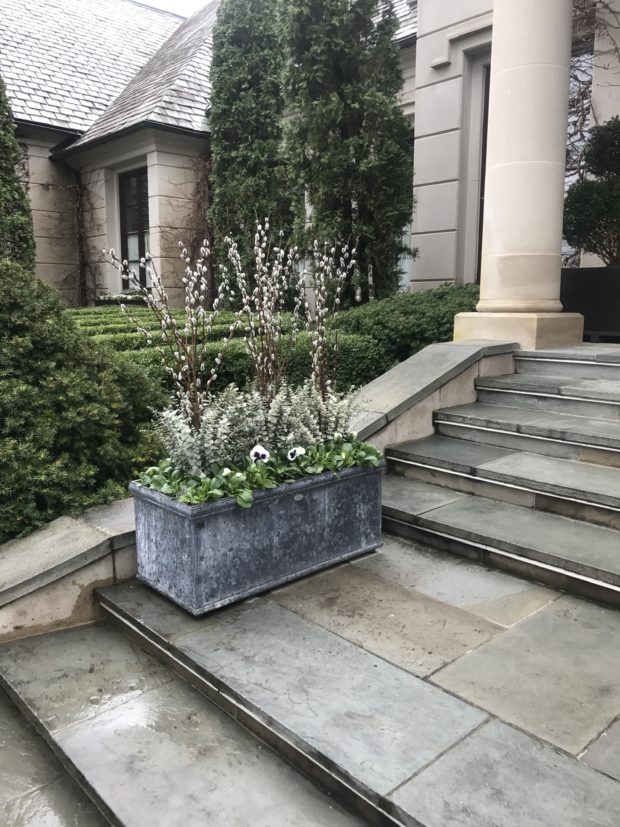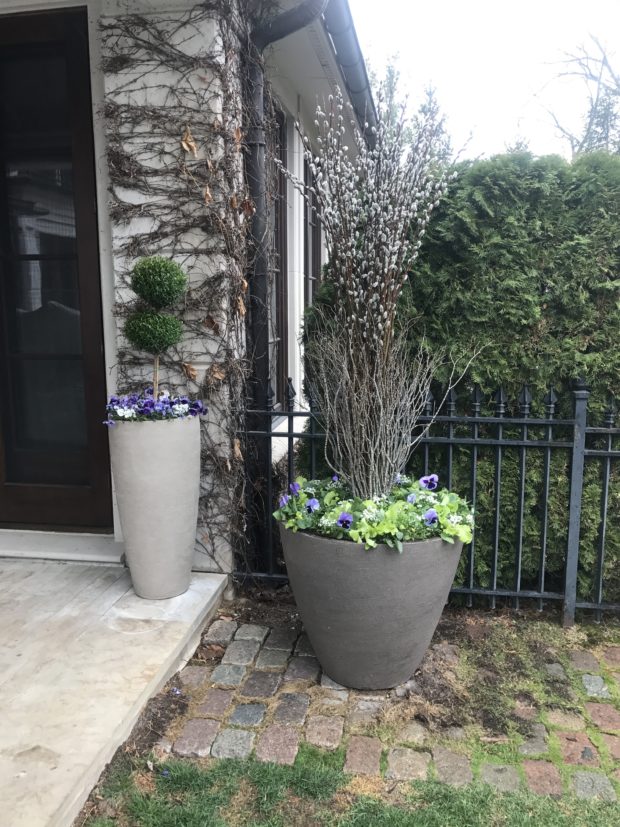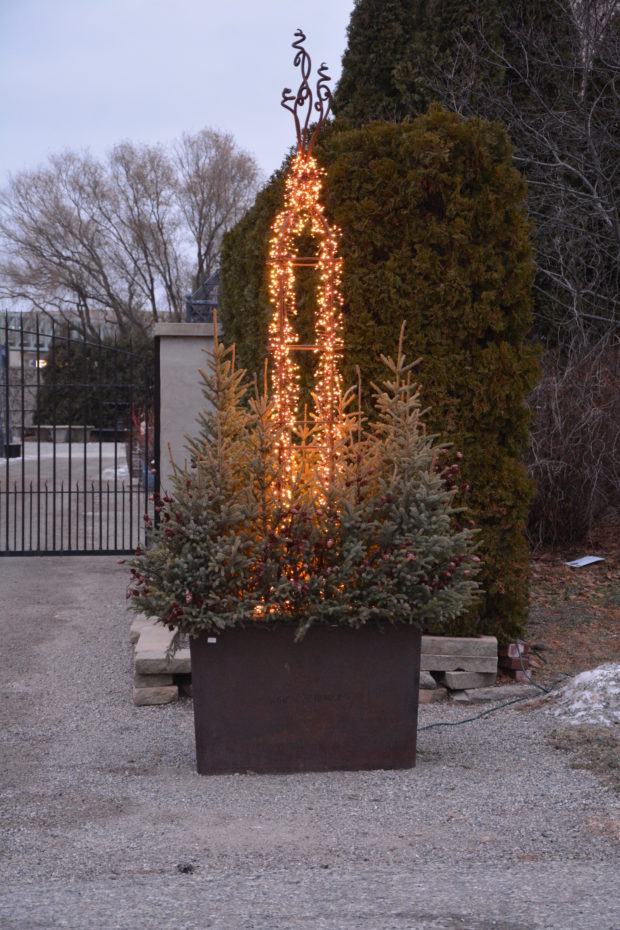 We finished our last winter installation this Tuesday past. A client who is out of town on holiday did not mind if her winter pots did not get done until after December 25th. Her home is now winter ready for her return. Yesterday we finished the winter pots at the store. So we are ready for winter too. The garland got done early in the season. We only have 6 or 7 to do in any given year. Buck’s fabricators at Branch make them, and install them. They do help a great deal with the winter containers, once those holiday garlands are done and hung. Once the first 6 garlands for clients were done and up, they made our shop garland. We had that garland, and not much else until 2 weeks ago, when Rob had a moment to dress this cast iron cauldron for winter. The spruce tips were a new green for us-of course he wanted to try them out. The hand wrought iron topiary form from England is wrapped with Lumineo LED string lights. Not so easy to see in this picture are a number of small scale pine cone picks that for all the world look like they are attached to those spruce tips. For weeks, a garland and a single pot were all we had to show for the winter.
We finished our last winter installation this Tuesday past. A client who is out of town on holiday did not mind if her winter pots did not get done until after December 25th. Her home is now winter ready for her return. Yesterday we finished the winter pots at the store. So we are ready for winter too. The garland got done early in the season. We only have 6 or 7 to do in any given year. Buck’s fabricators at Branch make them, and install them. They do help a great deal with the winter containers, once those holiday garlands are done and hung. Once the first 6 garlands for clients were done and up, they made our shop garland. We had that garland, and not much else until 2 weeks ago, when Rob had a moment to dress this cast iron cauldron for winter. The spruce tips were a new green for us-of course he wanted to try them out. The hand wrought iron topiary form from England is wrapped with Lumineo LED string lights. Not so easy to see in this picture are a number of small scale pine cone picks that for all the world look like they are attached to those spruce tips. For weeks, a garland and a single pot were all we had to show for the winter.
 So why wouldn’t I dress the store for winter early in the season? Lots of our shop clients would like to see what we have a mind for the season. Some of them might be inclined to take some aspect of our idea into consideration for their own winter holiday. There are plenty of good answers to that question. The strongest answer is that our clients come first. We did just shy of 60 projects between November 10 and December 24. Just about 200 containers. And two holiday parties. This is a lot of of work to do in a very short amount of time. Not every client can be first, but it is easy to do the shop last.
So why wouldn’t I dress the store for winter early in the season? Lots of our shop clients would like to see what we have a mind for the season. Some of them might be inclined to take some aspect of our idea into consideration for their own winter holiday. There are plenty of good answers to that question. The strongest answer is that our clients come first. We did just shy of 60 projects between November 10 and December 24. Just about 200 containers. And two holiday parties. This is a lot of of work to do in a very short amount of time. Not every client can be first, but it is easy to do the shop last.
 There is another reason why we dress the shop for the winter last. I consider it a personal challenge to design and install from the left over materials. If you were raised as I was, the meals featuring leftovers were not my favorite. Some were downright unappealing. But as a designer, I have always been intrigued by the possibility that good design can take a rag tag group of the last of the materials, and make something worth looking at from them. I cannot really explain this, but metaphorically speaking, making a beautiful meal from a group of leftovers is a challenge that is satisfying.
There is another reason why we dress the shop for the winter last. I consider it a personal challenge to design and install from the left over materials. If you were raised as I was, the meals featuring leftovers were not my favorite. Some were downright unappealing. But as a designer, I have always been intrigued by the possibility that good design can take a rag tag group of the last of the materials, and make something worth looking at from them. I cannot really explain this, but metaphorically speaking, making a beautiful meal from a group of leftovers is a challenge that is satisfying.
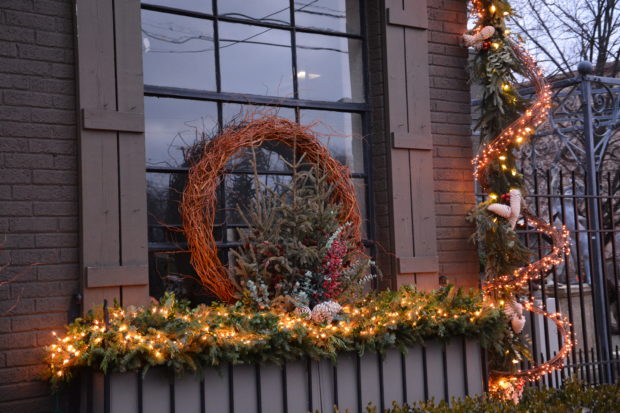 The greens in the window boxes at the shop were the leftover scraps from a busy season. Even those scraps proved to be not enough. The day after Christmas we bought 6 Frazier fir Christmas trees at a tree lot for one dollar each. It took four trees to produce enough greens for the window boxes at the shop. These were trees that were moments from being discarded- I was happy to rescue them from the discard heap. The labor to cut up the branches was considerable. But the end result was worth it. The window boxes do not look like they were stuffed with a material that no one wanted. The spruce tips in the centerpiece came to us late in the season, so we had those left over as well. I was more inclined to try to put them to use, than pitch them.
The greens in the window boxes at the shop were the leftover scraps from a busy season. Even those scraps proved to be not enough. The day after Christmas we bought 6 Frazier fir Christmas trees at a tree lot for one dollar each. It took four trees to produce enough greens for the window boxes at the shop. These were trees that were moments from being discarded- I was happy to rescue them from the discard heap. The labor to cut up the branches was considerable. But the end result was worth it. The window boxes do not look like they were stuffed with a material that no one wanted. The spruce tips in the centerpiece came to us late in the season, so we had those left over as well. I was more inclined to try to put them to use, than pitch them.
 It is impossible to tell in advance which twigs will be left over. Every year the twig overage is different. This year, we had curly willow left, and just about nothing of any other type of twig. So curly willow was destined to play a part in the shop winter pots. The sage eucalyptus was not so popular this year, but the color is striking with the curly willow, and the red berries.
It is impossible to tell in advance which twigs will be left over. Every year the twig overage is different. This year, we had curly willow left, and just about nothing of any other type of twig. So curly willow was destined to play a part in the shop winter pots. The sage eucalyptus was not so popular this year, but the color is striking with the curly willow, and the red berries.
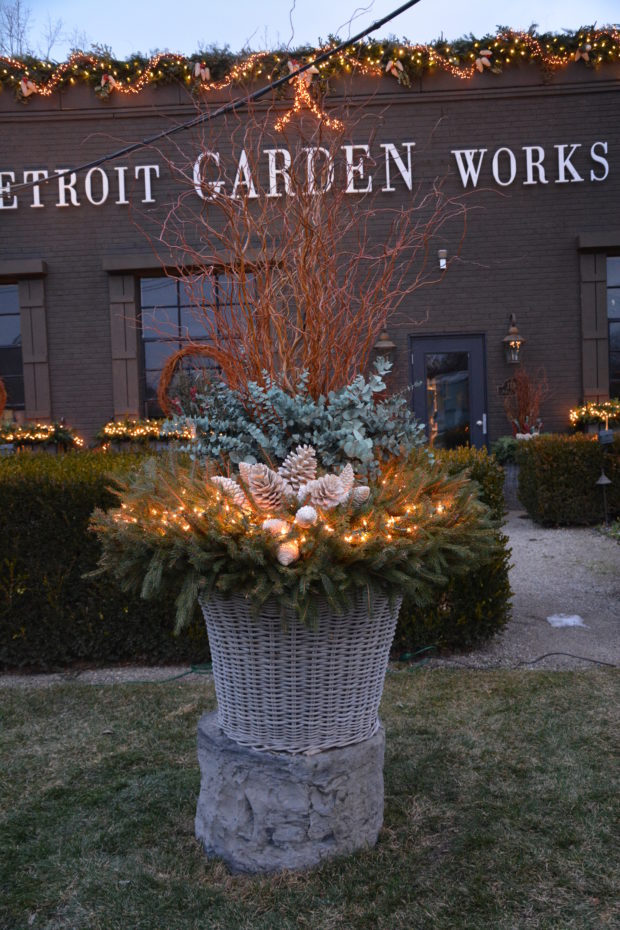 I will admit we never have any bleached pine cones left over, no matter how many we buy. So I did purchase 2 cases of them, just for my clients and the shop winter display. We put them in the garland, and in all of the pots and window boxes. At the close of the season, we had 2 bags left. Detroit Garden Works has their only sale of the year between December 25 and January 7. One of those bags of cones was sold yesterday, and I am sure the last one will find a home soon.
I will admit we never have any bleached pine cones left over, no matter how many we buy. So I did purchase 2 cases of them, just for my clients and the shop winter display. We put them in the garland, and in all of the pots and window boxes. At the close of the season, we had 2 bags left. Detroit Garden Works has their only sale of the year between December 25 and January 7. One of those bags of cones was sold yesterday, and I am sure the last one will find a home soon.
 We also manufacture the most stunning lighted rings for winter gardens; I have posted pictures of them plenty of times. Both the hanging and spiked versions are just about gone now. But we did have 4 steel rings that had not had lights put on them, so we used those rings as a base for a collection of curly willow wreaths that sit at the back of each window box. Those three foot diameter wreaths are properly scaled to our industrial sized windows, and that vibrant color reads even at a distance.
We also manufacture the most stunning lighted rings for winter gardens; I have posted pictures of them plenty of times. Both the hanging and spiked versions are just about gone now. But we did have 4 steel rings that had not had lights put on them, so we used those rings as a base for a collection of curly willow wreaths that sit at the back of each window box. Those three foot diameter wreaths are properly scaled to our industrial sized windows, and that vibrant color reads even at a distance.
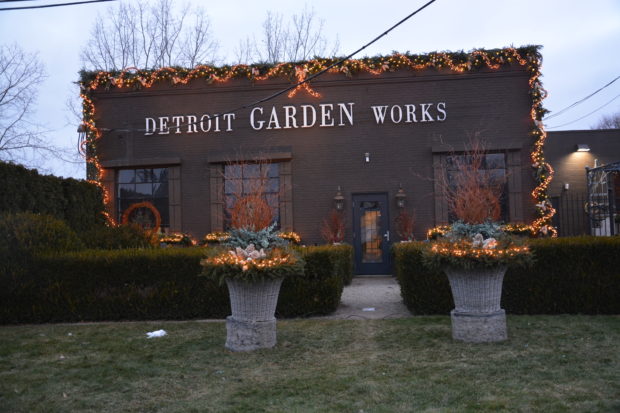 Lighting is such an essential part of any Michigan winter display. They gray days will vastly outnumber the sunny ones from now until April. We did use left over incandescent garland light strings in the window boxes and pots, as we are transitioning over to stocking only LED lights. The light strings on the garland are attached to the grapevine portion of that garland. Those light strings are LED lights. One string is 110 feet long, which eliminates the need to string light sets together. As the LED lights have a 10 year lifespan, we can store the grapevine with the lights still attached for next year’s garland, and maybe the year after that. The grapevine is a durable material.
Lighting is such an essential part of any Michigan winter display. They gray days will vastly outnumber the sunny ones from now until April. We did use left over incandescent garland light strings in the window boxes and pots, as we are transitioning over to stocking only LED lights. The light strings on the garland are attached to the grapevine portion of that garland. Those light strings are LED lights. One string is 110 feet long, which eliminates the need to string light sets together. As the LED lights have a 10 year lifespan, we can store the grapevine with the lights still attached for next year’s garland, and maybe the year after that. The grapevine is a durable material.
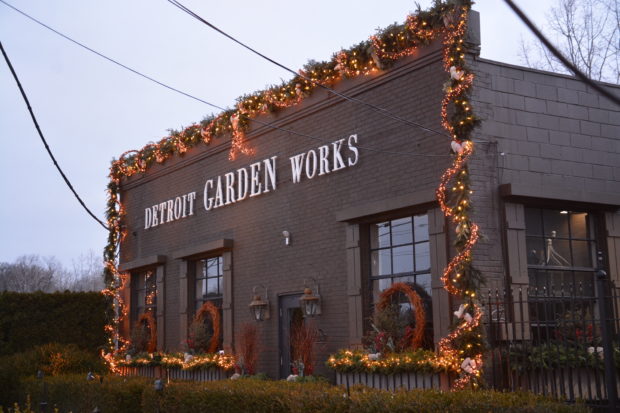 I will enjoy being able to walk past all my leftovers every day all winter long.
I will enjoy being able to walk past all my leftovers every day all winter long.
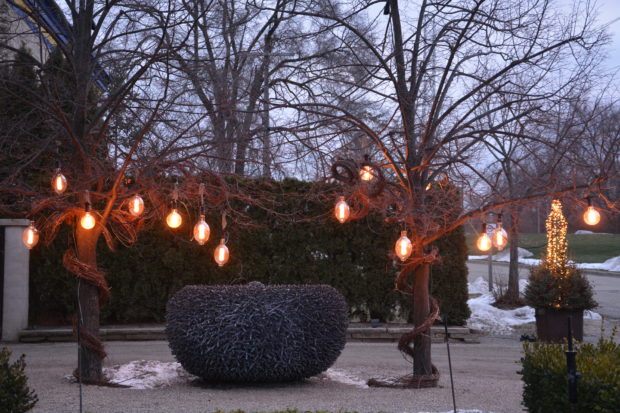 That pot at the end of the driveway has some company now.
That pot at the end of the driveway has some company now.

